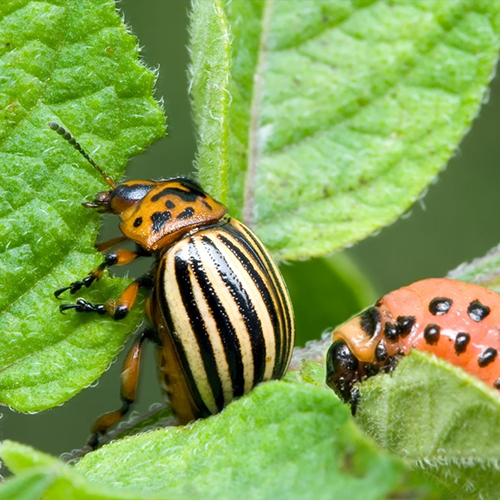PEST MANAGEMENT
Pest management in agriculture involves a variety of methods to control pests and diseases that can damage crops and livestock. Integrated Pest Management (IPM) is a key approach, combining different strategies to minimize pest problems while reducing reliance on chemical pesticides.

-
Integrated Pest Management (IPM)
Definition:
IPM is a strategic approach that uses a combination of cultural, biological, and chemical control methods to manage pests, aiming to minimize environmental and health risks while maintaining pest populations below economically damaging levels.
Principles:
- Prevention: Using cultural practices like crop rotation and sanitation to prevent pest problems.
- Monitoring: Regularly scouting crops to identify pests and their populations, as well as their natural enemies.
- Action Thresholds: Establishing levels of pest populations or damage that trigger control measures.
- Targeted Control: Choosing the most effective and least risky control methods, starting with biological and cultural methods before using chemical pesticides.
- Evaluation: Regularly assessing the effectiveness of control methods and making adjustments as needed.
Benefits of IPM:
- Reduces pesticide use and associated risks to human health and the environment.
- Promotes sustainable agriculture by protecting natural ecosystems and biodiversity.
- Increases the efficiency of pest control, as it focuses on preventing problems rather than reactive measures.
- Pest Management Methods
Cultural Methods:
- Crop Rotation: Planting different crops in sequence to disrupt pest life cycles and prevent the buildup of pests in the soil.
- Resistant Varieties: Utilizing plant varieties that are naturally resistant to specific pests.
- Hygiene: Maintaining clean fields, equipment, and storage areas to prevent pest entry and spread.
Biological Methods:
- Natural Enemies: Using predators, parasites, or pathogens to control pest populations.
- Biological Control Agents: Releasing beneficial insects or microorganisms to target specific pests.
Physical Methods:
- Traps: Using traps to capture or deter pests.
- Barriers: Erecting physical barriers to prevent pest entry into crop areas.
Chemical Methods:
- Pesticides: Using chemicals to kill or repel pests, but with careful consideration of their potential risks and effectiveness.
- Pesticides Selection: Prioritizing the use of less toxic pesticides and applying them only when necessary.
Genetic Methods:
- Pest-Resistant Varieties: Breeding or genetically engineering plants to be resistant to specific pests.
Regulatory Methods:
- Quarantine: Implementing regulations to prevent the entry or spread of pests across borders.
- Importance of Pest Management
Economic Impact:
Pests can cause significant crop losses, leading to reduced yields and lower profits for farmers.
Health and Safety:
Some pests can transmit diseases to humans and livestock, while others can cause allergic reactions or other health issues.
Environmental Impact:
Pest management practices can affect the environment through pesticide runoff, habitat loss, and biodiversity decline.